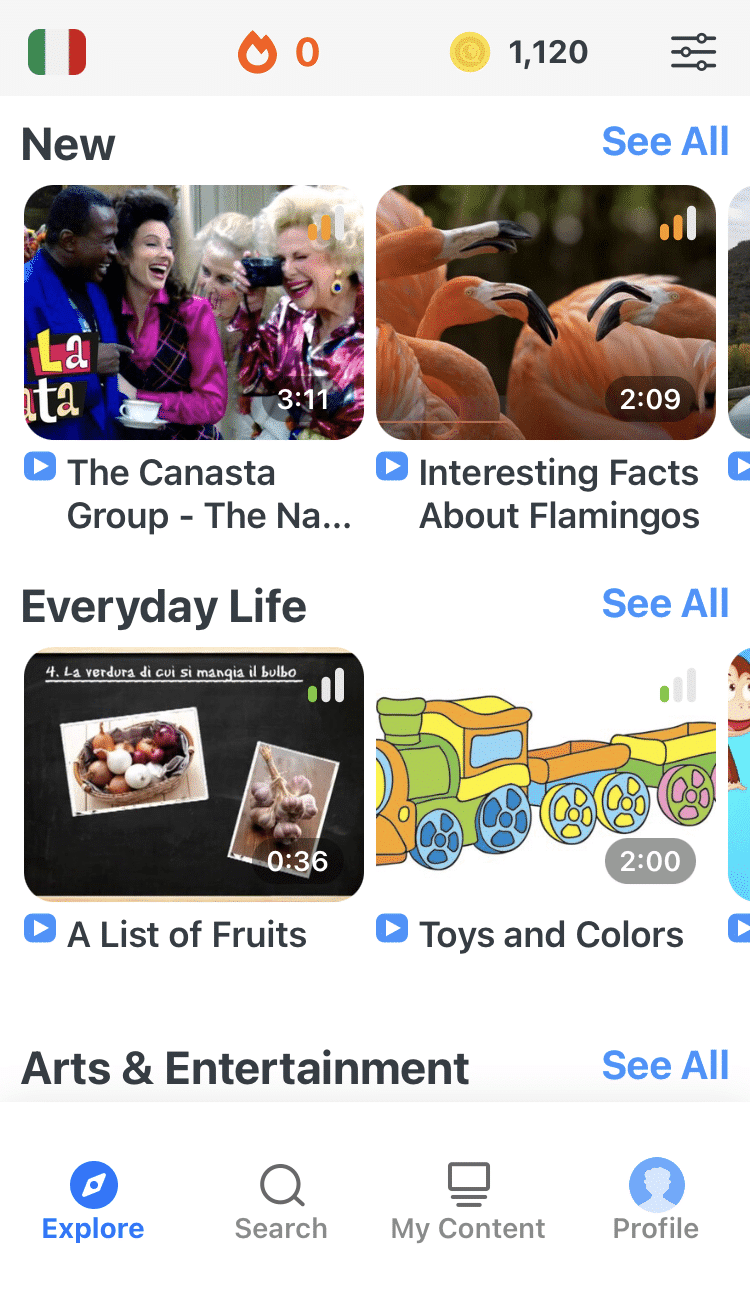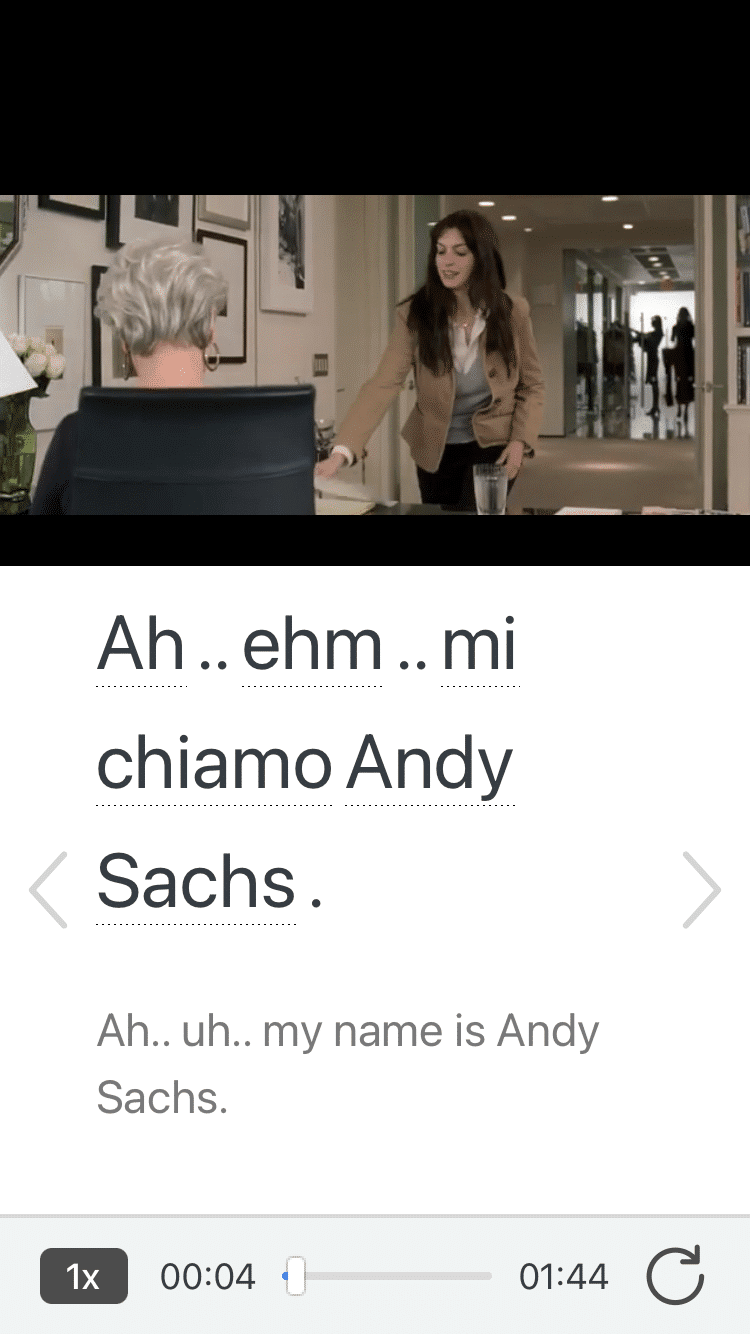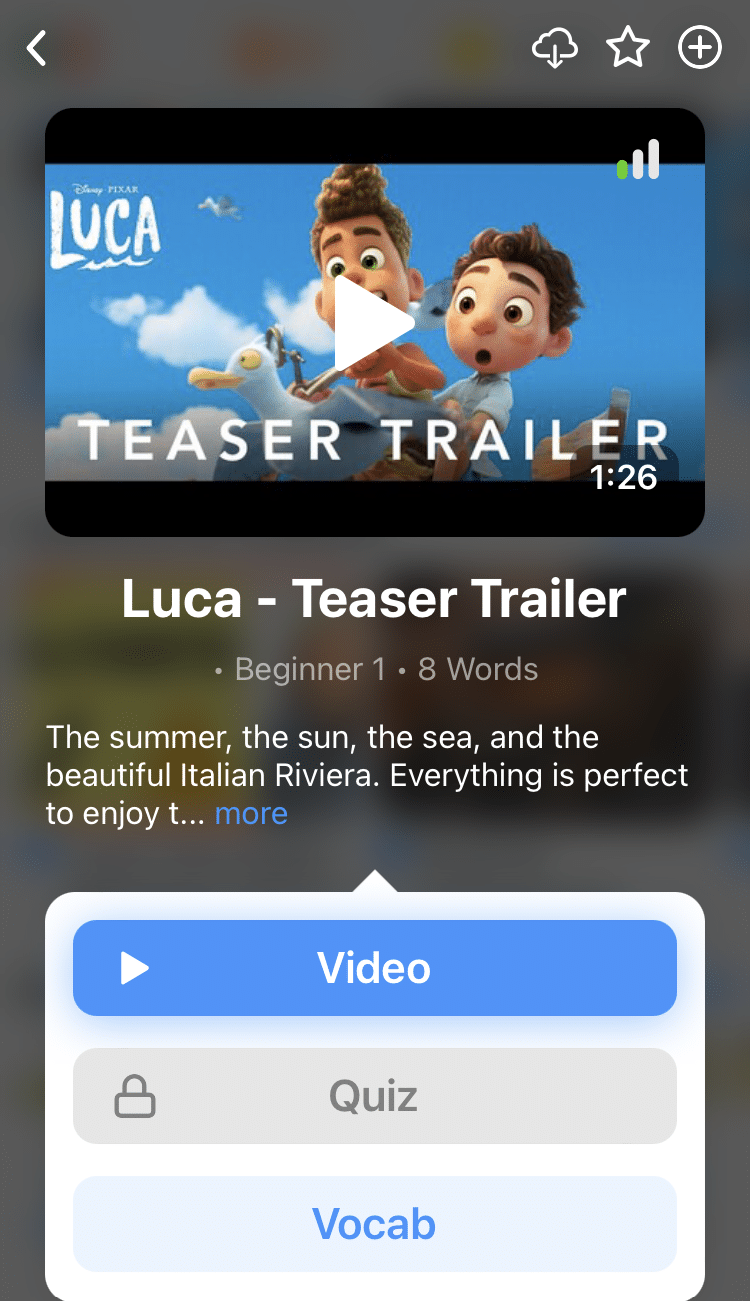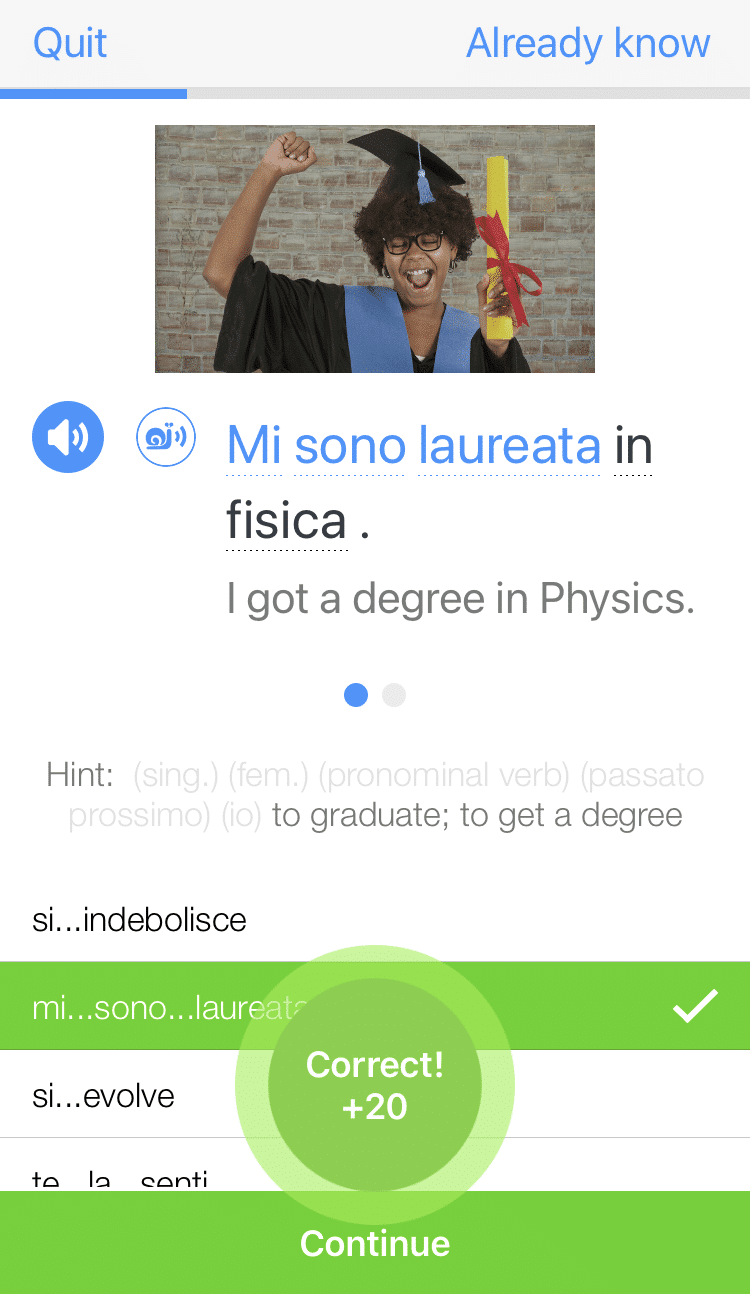
Direct Object Pronouns in Italian
Pronouns are one of those complex grammar points in Italian.
By now, you’ve probably already learned the Italian personal or subject pronouns, so you don’t have to keep repeating people’s names.
So, what’s the next step?
Learning Italian direct object pronouns, naturally.
The Italian direct object pronouns are mi (me), ti (you), lo (him/it), la (her/it), ci (us), vi (you all) and li/le (them).
Let’s take a look at these more directly!
Contents
- What Are Direct Object Pronouns in Italian?
- How to Use Direct Object Pronouns in Italian
- Emphasizing the Direct Object: La Forma Tonica
- Using Direct Object Pronouns with Special Tenses
- What’s the Difference Between Direct and Indirect Object Pronouns in Italian?
- Where to Practice Direct Object Pronouns in Italian
- And One More Thing...
Download: This blog post is available as a convenient and portable PDF that you can take anywhere. Click here to get a copy. (Download)
What Are Direct Object Pronouns in Italian?
A direct object pronoun replaces what would otherwise be a noun in a sentence.
Nouns can be people, places or things:
- They can be concrete objects such as un bicchiere (a glass) or abstract concepts such as l’amore (love).
- They can also be animate (alive), such as il cane (dog) or inanimate (not living), such as il libro (book).
Direct object pronouns replace a sentence’s direct object—the object acted on by the subject. For example:
Io mangio la pizza. (I eat pizza).
In this sentence, the noun pizza (pizza) is the direct object. It’s the noun being acted upon by the subject through the verb mangio (eat).
Direct objects differ from indirect objects in that they’re not preceded by a preposition such as a (to). Let’s take a look at this sentence:
Io do la pizza a Maria. (I give the pizza to Maria).
Here, the noun Maria is the indirect object, not the direct object. This is because Maria is the receiver of the verb dare (to give), and it’s connected to the phrase by the preposition a (to).
How to Use Direct Object Pronouns in Italian
The biggest difference between English and Italian direct objects is their placement. In Italian, direct object pronouns come before the verb, unlike in English, where they come after the verb:
Maria mi ama. (Maria loves me).
Mi is the direct object of the verb ama (loves), and it’s placed before the verb.
This is the most common way to use direct object pronouns. This is called la forma atona (the unstressed form).
There’s a form that goes after the verb, but we’ll discuss that later. Let’s look at the different direct object pronouns first!
Direct Object Pronouns for People
These direct object pronouns commonly replace animate objects such as people.
| English | Italian | ||
|---|---|---|---|
| Singular | me | mi | |
| you | ti | ||
| Plural | us | ci | |
| you | vi |
To use the correct direct object pronoun, you have to consider the direct object’s gender (masculine or feminine) and number (singular or plural).
Direct Object Pronouns for Both People and Objects
There’s also a set of direct object pronouns that can replace both animate and inanimate objects.
These pronouns have a dual meaning:
- They can be used to replace a person or people and mean him, her or them.
- They can also replace an object or more than one object and mean it or them.
There are four of them:
| English | Italian | ||
|---|---|---|---|
| Singular | him, it (masculine) | lo | |
| her, it (feminine) | la | ||
| Plural | them (masculine) | li | |
| them (feminine) | le |
Check out these examples of direct object pronouns replacing animate objects:
| Original Sentence | Sentence with Direct Pronoun |
|---|---|
| Conosco il cameriere. (I know the waiter.) | Lo conosco. (I know him.) |
| Conosco la cameriera. (I know the waitress.) | La conosco. (I know her.) |
| Conosco i camerieri. (I know the waiters.) | Li conosco. (I know them.) |
| Conosco le cameriere. (I know the waitresses.) | Le conosco. (I know them.) |
Here’s how you would use direct object pronouns to replace inanimate objects:
| Original Sentence | Sentence with Direct Pronoun |
|---|---|
| Vedo il giocattolo. (I see the toy.) | Lo vedo. (I see it.) |
| Vedo la macchina. (I see the car.) | La vedo. (I see it.) |
| Vedo gli alberi. (I see the trees.) | Li vedo. (I see them.) |
| Vedo le case. (I see the houses.) | Le vedo. (I see them.) |
Emphasizing the Direct Object: La Forma Tonica
While all the direct object pronouns we’ve worked with so far go before the conjugated verb, speakers can also place direct object pronouns after the verb. This practice is less common, but is used to emphasize the direct object pronoun.
For example, I could say something like:
Non vedo lui. (I don’t see him.)
This really emphasizes that I am unable to see that specific person.
These pronouns are in what’s called la forma tonica .
Follow this table to formulate la forma tonica:
| Direct Object | English | Italian |
|---|---|---|
| Singular | He loves me. | Lui ama me. |
| She loves you. | Lei ama te. | |
| She loves him. | Lei ama lui. | |
| He loves her. | Lui ama lei. | |
| Plural | You all love us. | Voi amate noi. |
| They love you all. | Loro amano voi. | |
| We love them. | Noi amiamo loro. |
Using Direct Object Pronouns with Special Tenses
Compound Verb Tenses
In compound verb tenses (tenses that have two or more elements in the verb structure), direct object pronouns continue to go in front of the verb—even the auxiliary verb in tenses such as passato prossimo (present perfect tense).
It’s helpful to remember that the pronouns lo and la shorten to l’ whenever they come in front of the auxiliary verb avere (to have) in the passato prossimo:
Ho comprato il biglietto. (I bought the ticket.) → L’ho comprato. (I bought it.)
Another helpful note is that for the passato prossimo, the ending of the past participle changes based on the gender and number of the direct object pronoun:
| Number of Direct Object | Gender of Direct Object | Past Participle Ending |
|---|---|---|
| Singular | Feminine | -a |
| Plural | Masculine | -i |
| Feminine | -e |
Here are some example sentences:
| Original Sentence | Sentence with Direct Pronoun |
|---|---|
| Ho comprato la pizza. (I bought the pizza.) | L’ho comprata. (I bought it.) |
| Ha comprato i pomodori. (He bought the tomatoes.) | Li ha comprati. (He bought them.) |
| Hanno comprato le sedie. (They bought the chairs.) | Le hanno comprate. (They bought them.) |
Imperative Tense
In the imperative (command form), the direct object pronoun gets tacked onto the end of the verb form. This forms commands such as:
Mangiala. (Eat it.)
Leggiamolo. (Let’s read it).
In the negative form, the direct object pronoun can be tacked onto the end of the infinitive (unconjugated) verb or placed before the verb form. This means that you could say both non mangiarla and non la mangiare (don’t eat it).
Notice that the –e of the infinitive gets taken off when the direct object pronoun is tacked on in this form.
What’s the Difference Between Direct and Indirect Object Pronouns in Italian?
As mentioned above, direct and indirect object pronouns serve different purposes in sentences. So, let’s take a quick look at the difference!
Direct object pronouns replace the direct object of a verb, whereas indirect object pronouns replace the indirect object.
For example, in the sentence Io vedo il libro (I see the book), il libro (the book) is the direct object. If you replace it with a pronoun, it becomes Io lo vedo (I see it), where lo is the direct object pronoun.
However, in the sentence Io do il regalo a Maria (I give the gift to Maria), a Maria (to Maria) is the indirect object. Replacing it with a pronoun, it becomes Io le do il regalo (I give her the gift), where le is the indirect object pronoun.
If you want to learn more about the different types of pronouns in Italian, you can check out this guide here!
Where to Practice Direct Object Pronouns in Italian
Now that you’ve learned the rules of the direct object pronouns in Italian, you’ll need to practice!
- Lo Studio Italiano has a few quizzes for practicing the correct direct object pronoun based on the noun’s gender and number.
- One World Italiano lets you practice putting sentences with direct object pronouns in the correct order.
- ToLearnItalian offers two quizzes. The first is simply for practicing personal direct object pronouns. The second is for practicing pronouns with the passato prossimo, as well as the agreement between the pronoun and the past participle.
- FluentU Italian is a great way to reinforce what you’ve learned and see direct object pronouns used in context by native speakers.
FluentU takes authentic videos—like music videos, movie trailers, news and inspiring talks—and turns them into personalized language learning lessons.
You can try FluentU for free for 2 weeks. Check out the website or download the iOS app or Android app.
P.S. Click here to take advantage of our current sale! (Expires at the end of this month.)
Now that you have a guide about how and when to use direct object pronouns in Italian, you’re ready to start using them in your everyday Italian usage!
Download: This blog post is available as a convenient and portable PDF that you can take anywhere. Click here to get a copy. (Download)
And One More Thing...
If you're as busy as most of us, you don't always have time for lengthy language lessons. The solution? FluentU!
Learn Italian with funny commericals, documentary excerpts and web series, as you can see here:

FluentU helps you get comfortable with everyday Italian by combining all the benefits of complete immersion and native-level conversations with interactive subtitles. Tap on any word to instantly see an image, in-context definition, example sentences and other videos in which the word is used.

Access a complete interactive transcript of every video under the Dialogue tab, and review words and phrases with convenient audio clips under Vocab.

Once you've watched a video, you can use FluentU's quizzes to actively practice all the vocabulary in that video. Swipe left or right to see more examples of the word you’re on.

FluentU will even keep track of all the Italian words you’re learning, and give you extra practice with difficult words. Plus, it'll tell you exactly when it's time for review. Now that's a 100% personalized experience!
The best part? You can try FluentU for free with a trial.
Start using the FluentU website on your computer or tablet or, better yet, download the FluentU app from the iTunes or Google Play store. Click here to take advantage of our current sale! (Expires at the end of this month.)



